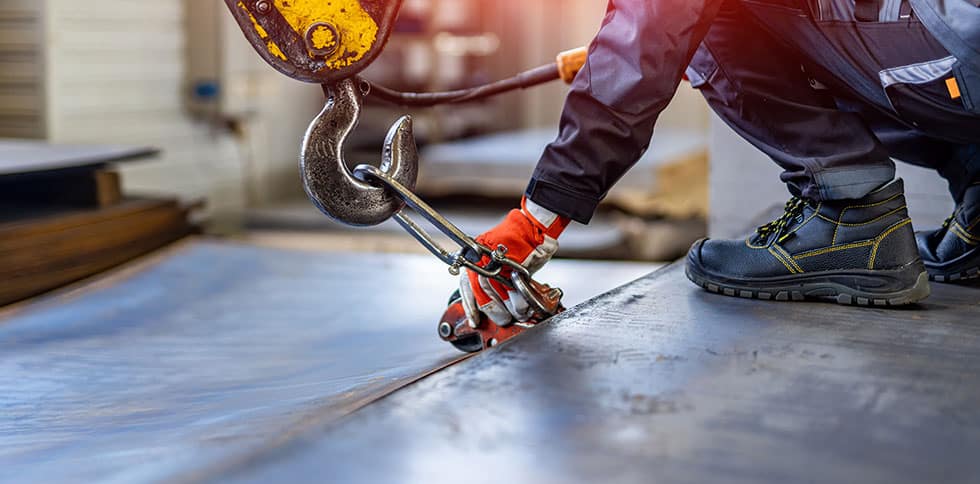New York Hoist Accidents
A hoist is a large piece of equipment used on construction sites to build tall buildings, bridges, and other structures requiring lifting materials. They are also commonly used on farms and other industries that require loads to be lifted to a great height.
Construction hoists are vital for transporting heavy materials and workers on job sites, especially in high-rise projects. These devices include:
- Material hoists – Used for lifting supplies and equipment.
- Personnel hoists – Temporary elevators that move workers between levels.
- Chain & wire hoists – Electric or manual devices for lifting heavy loads.
- Tower hoists – Used on large construction sites to transport materials.
Hoists can become deadly hazards when improper operation, defective parts, or negligence interfere.
NYC Hoist Accident Stats
Hoist-related accidents are a significant concern in New York City’s construction industry. In 2023, the city recorded seven construction-related fatalities, a decrease from previous years, yet injuries increased to 692, marking a 25% rise from 2022. Falls remain the leading cause of these incidents. Nationally, OSHA consistently cites fall protection violations as the most frequent infractions in construction, underscoring the critical need for stringent safety measures.
NY Hoist Safety Standards
Hoists must undergo regular maintenance and inspections to ensure worker safety. The Occupational Safety and Health Administration (OSHA) enforces strict regulations to prevent hoist-related accidents:
- OSHA 1926.554 mandates that overhead hoists must not exceed their safe working load, must move freely without restrictions, and operators must maintain a safe distance during use.
- OSHA 1926.552 requires compliance with manufacturer specifications for material and personnel hoists. If unavailable, a professional engineer must determine safety standards.
- All hoists must clearly post load limits, operating speeds, and hazard warnings, and worn or damaged ropes and wires must be replaced promptly.
Failure to comply with these safety regulations can lead to employer or contractor liability for injuries caused by defective or improperly maintained hoists.
What Causes NY Hoist Accidents?
Hoist accidents often result from disregarded safety protocols or machinery defects. Even the slightest deviation in operation or design can result in a severe accident.
The most common causes include:
Hoist Malfunctions & Defective Equipment
Mechanical failures and defective components are major causes of hoist accidents. Poor maintenance can lead to worn-out parts, increasing the risk of sudden failures. Faulty brakes, frayed cables, broken chains, and malfunctioning pulleys can cause uncontrolled movements, leading to serious injuries. Additionally, electrical malfunctions in powered hoists can result in unexpected swings or drops, endangering workers and bystanders.
Overloaded Hoists
Exceeding a hoist’s weight capacity is a common but preventable cause of collapse. The hoist structure may fail when loads are too heavy or improperly balanced, leading to falling materials or tipping accidents. Employers must enforce strict adherence to manufacturer weight limits and proper load distribution to prevent catastrophic incidents.
Operator Errors & Lack of Training
Untrained or inexperienced workers pose a significant hazard when operating hoists. Common mistakes include failing to secure loads properly, using hoists at unsafe speeds, or not following proper lifting procedures. Inadequate training increases the likelihood of preventable accidents, making comprehensive hoist operation education essential for workplace safety.
Falling Objects & Worker Falls
Falling objects are a leading cause of hoist-related injuries. Loads that are improperly secured can break loose, striking workers below. Additionally, personnel hoists used to transport workers must be properly secured; otherwise, a fall from height can result in severe or fatal injuries. Caught-in-between accidents, where workers get trapped between moving hoist components, also pose a serious risk on busy construction sites.
Hoist Electrocution Accidents
Electrocution hazards arise when hoists encounter live power lines or experience electrical malfunctions. Workers may suffer severe shocks, burns, or fires if a hoist’s wiring is faulty or improperly grounded. Construction sites must ensure all hoists are inspected for electrical safety and positioned away from power lines to minimize these risks.
Common Injuries in NYC Hoist Accidents
Hoist accidents can result in devastating injuries, often leaving workers with long-term medical conditions and financial hardships. Below are the most common injuries sustained in hoist-related accidents:
- Traumatic Brain Injuries (TBI): A direct impact to the head from a fall or a falling object can cause TBIs, ranging from mild concussions to severe brain damage. Workers struck by unsecured loads or falling from improperly secured personnel hoists may suffer cognitive impairment, memory loss, or permanent neurological damage.
- Spinal Cord Injuries & Paralysis: Falls from hoists or being struck by malfunctioning equipment can result in spinal cord trauma, leading to partial or complete paralysis. A worker caught between a hoist and another object may sustain catastrophic spinal injuries requiring lifelong medical care and rehabilitation.
- Broken Bones & Fractures: The immense force of falling from a height or being hit by a collapsing hoist can cause severe fractures. These injuries may require multiple surgeries, physical therapy, and extended recovery periods, limiting a worker’s ability to return to their job.
- Amputations & Crush Injuries: Workers caught between hoist components or struck by falling loads may suffer crushed limbs, leading to amputations. These injuries often result in permanent disability, requiring prosthetics and long-term medical support.
- Electrocution & Severe Burns: Electrical hoist malfunctions and contact with live power lines pose a significant risk of electrocution. Workers operating hoists near overhead wires may suffer severe burns, nerve damage, or cardiac arrest due to electrical exposure.
- Fatal Hoist Accidents: In the most tragic cases, hoist failures lead to fatal injuries. Families of workers who lose their lives in these accidents may be eligible to file a wrongful death claim, seeking compensation for lost income, funeral expenses, and emotional suffering.
Given the severe nature of hoist accident injuries, it is critical for victims and their families to understand their legal rights. Consulting with an experienced NYC hoist accident lawyer can help ensure maximum compensation.
Tell Us What Happened
"*" indicates required fields


